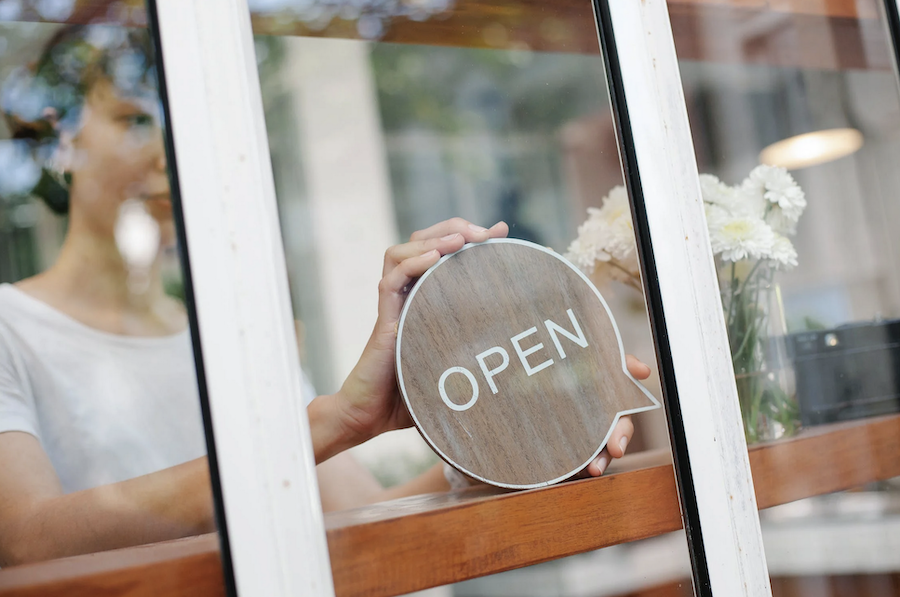Opening a Restaurant – An Absolute Guide to Starting a Successful Restaurant
Whether you are someone who always dreamt of opening a restaurant or loves cooking and wishes to own an outlet, there are quite a few things to consider before you go ahead.
While the idea might initially seem overwhelming, it’s certainly possible.
Statista Research predicted a rise in the market size of the restaurant industry in the UK to 17.8 billion British Pounds in 2022, which was an increase of 6.6 billion pounds from the previous year.
In this article, we delve into the various aspects that are integral in planning and executing your idea before your dream turns into a reality.
Read on, and once you are done, I am sure you will have a fair idea and a good level of confidence to pursue your passion for opening a restaurant.
Let’s walk you through what opening a restaurant is all about.
Guide to starting a successful restaurant:
1. Create a restaurant business plan
2. Assess the initial costs
3. Find ways to finance your restaurant
4. Conduct thorough market research
5. Check for all licenses
6. Explore premises & locations
7. Hire staff and set up equipment
8. Arrange vendors and deliveries
9. Market your restaurant
10. Digitize your restaurant
11. Adopt innovative packaging
1. Create a restaurant business plan
A solid business plan helps you stay alert and acts as a north star, ensuring you aren’t deviating.
Besides, during your project of opening a restaurant, if you lose track or face some contingencies, it’s always possible to revisit and revise the plan accordingly.
In essence, your restaurant business plan would include sub-plans like sales and marketing plans, operational plans, production plans, etc.
In addition, you could include elements like ideas for – a branded cover, a sample menu (items and prices), restaurant brand and philosophy, imagery (sort of mood boards, etc.), demographics (who will be eating there; young people, seasoned diners and such), service style, financial investments and more.
Make sure to carve a business plan that serves as the perfect epitome of your passion for whatever you are into. Sticking to the business plan ensures you are always on track.
2. Assess the initial costs
While passion always supersedes everything, how much you can shell out as upfront costs is vital to consider.
Unlike other businesses, opening a restaurant is, to an extent, flexible.
For example, if you can afford it, you can start your eatery outside of London rather than in the City – which could be a good starting point if you want to start small.
Likewise, a food truck could be a much more economical option compared to brick and mortar eatery.
Rental costs
While opening a restaurant, these are some things that can’t be avoided, though smartly managed.
In suburban London, rent costs vary between £10-20 per sq. foot per month.
While this looks small, considering an eatery size of one garage, i.e., 200 ft, you can imagine how the costs start rising!
If you want to go more posch, that would further add up.
Besides, in any case, around 40% of space would be taken up by your kitchen and restrooms, leaving you the remaining 60% for the dining area.
Other costs
You need to take into account the costs for supplies, staff, salaries, uniforms, cooking equipment, furniture, and several sundry costs.
Depending on the menu you plan, the location, and the restaurant size, the initial set-up costs would vary.
All said, you can get started with opening a restaurant from the early thousands to something like a six-figure sum.
3. Find ways to finance your restaurant
To realize your dream, you need the start-up capital.
So, whom do you plan to reach out to? Well, there are quite a few options out there.
Bank Loans
Though this idea seems conventional, it helps in most cases.
You can reach out to your banks to avail of small loans.
Prepare an outstanding professional profile of yourself and this is where your business plan comes into its own.
Collate all information you have on existing resources, create your business plan, make an estimate of the projected revenue, and conduct thorough market research (follows in the next section).
Online Personal Lenders
These days, a lot of lenders offer loans online.
They usually follow the same rules as the banks.
Check out the credit unions which offer low-interest-rate loans.
Public Funding
In case you fail to procure loans the conventional way, there are various public funding websites to help you out.
The UK start-up loan scheme offers you easier loans coupled with mentoring and support to get started with your business.
These government-backed sources are as good and reliable as traditional bank loans.
Family and friends
In any case, you could always reach out to your close friends or family members who can help you with a loan in this regard.
4. Conduct thorough market research
Remember, you aren’t the only participant in the race.
You need to know your competitor’s strengths and weaknesses. Look for those in your niche and check out their websites.
While Gourmet Burger and Byron rule the restaurant industry in London, you need to check for players in your target segment.
Stay updated on the existing and emerging consumer trends, menu trends, and other ongoing behaviors of customers to remain ahead.
There are various ways to conduct market research.
You could go for a street survey – grab a pen and notepad and ask relevant questions from the passers-by to know their food preferences and the like.
Alternatively, if you need more detailed info, you can use focus groups comprising 8-10 people to whom you can ask more elaborate questions to dive deeper into their restaurant preferences.
Online survey software like SurveyMonkey is another useful tool to help you with.
In addition, you can even hire a market research company or agency to do the same on your behalf.
5. Check for all licenses
In the UK for example, you need to get licenses to carry out certain businesses; a restaurant is one example.
Ensure you obtain all such licenses in advance to prevent legal hassles later.
Some of these licenses include serving alcoholic drinks, conducting events, and such.
Food Hygiene Certificates, Pest Control Regulations, and Food premises approval are others.
Check out the UK Food Standards Agency (FSA) website for more details on this if you’re in the UK.
All countries have their own version of this.
6. Explore premises & locations
In most countries, deciding the ideal location for your eatery is important.
It’s akin to watching an enthralling football match at an affordable price!
While you could certainly go ahead with opening a restaurant on a busy thoroughfare, do keep an eye on other potential avenues. You can target established areas or emerging spaces.
A parking facility lets you attract more customers, though it’s not mandatory when starting small.
Another tip is that you need to leverage the market gaps. For example, say in an area, there are no burger outlets, or the place doesn’t have options for vegans or vegetarians, you must capitalize on the opportunity.
Get started in that segment, and you will pull customers in no time!
7. Hire staff and set up equipment
Staff and cooking equipment are a must-have for any restaurant.
Plan according to your restaurant size, menu, and more.
Initially, you could try managing with used kitchenware until a little later when you can get a new set of equipment.
8. Arrange vendors and deliveries
Find a list of wholesalers and vendors online to get stock of supplies on a weekly basis.
Keep multiple options open for vendors, as relying on a single one could land you in trouble.
For delivery, you could use food delivery apps.
However, they charge a commission of 15-25% on the order value, so you might want to make a note of that.
A mix of delivery apps plus your own delivery staff could work out better.
9. Market your restaurant
Opening a restaurant will only work when it is outstandingly marketed.
Creating an awesome website, handing out business cards, creating posts on social media, offering discounts to customers on their birthdays, and so on could go a long way in popularizing your outlet.
10. Digitize your restaurant
You could tap the potential of technology and install a POS system in your restaurant, which would play an integral role in making your operations effective.
It helps keep track of weekly and monthly progress statuses and lets you maximize your revenues.
This would be a cherry on the cake!
11. Adopt innovative packaging
Attractive packaging is a great way to showcase your brand, especially for dine-in restaurants.
Use eco-friendly, spillproof, and innovative ways of packaging that differentiate you from your competitors.
Wrapping up
Opening a restaurant is a cakewalk, provided you follow the guidelines and pursue your passion.
Starting small is always recommended; building higher one day at a time.
Focus on your segment and keep looking for ways to stand out.
You will surely carve your niche!
To know more about the restaurant industry, feel free to reach us here.
Thank you. Good luck!













